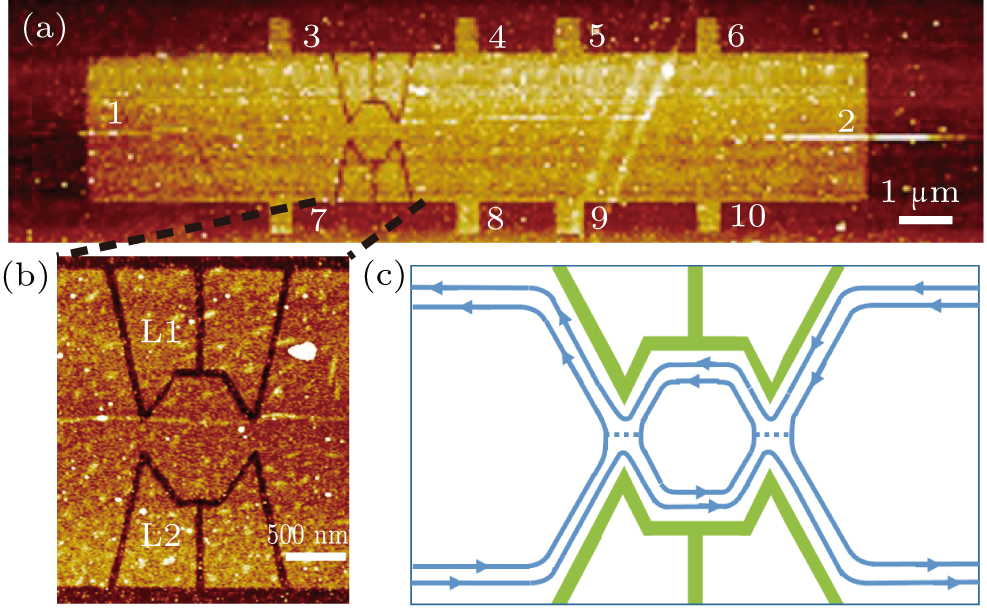Coulomb-dominated oscillations in a graphene quantum Hall Fabry–Pérot interferometer
Project supported by the National Key Research and Development Program of China (Grant Nos. 2016YFA0300601 and 2017YFA0303304), the National Natural Science Foundation of China (Grant Nos. 11874071, 11774005, and 11974026), and Beijing Academy of Quantum Information Sciences, China (Grant No. Y18G22).
(a) AFM image of a typical device used in this study. Bright yellow region is graphene and dark region is silicon oxide substrate. It consists of a interferometer and a standard Hall bar structure. Diagonal resistance RD (between contacts 4 and 7) of the interferometer and Hall resistance RXY (between contacts 5 and 9) of the bulk were measured simultaneously while driving current from 1 to 2. (b) A zoom in of the interferometer in (a). It is constructed with two adjacent narrow constrictions, introducing inter-edge scattering, and a central confined cavity. The designed area of the cavity is about 0.8 μm2. The side gates labeled by L1 and L2 define the interference path. (c) Schematic of the Coulomb-dominated interference. Propagating edge states are marked by the lines with arrows along the device edge. For the sake of simplicity, this picture (not exact the same in real measurement) shows that only one outer edge (close to the device boundary) is fully transmitted at the constriction. The inner edge state is partially transmitted to the central region by weak forward tunneling which is denoted by the horizontal dashed lines.
